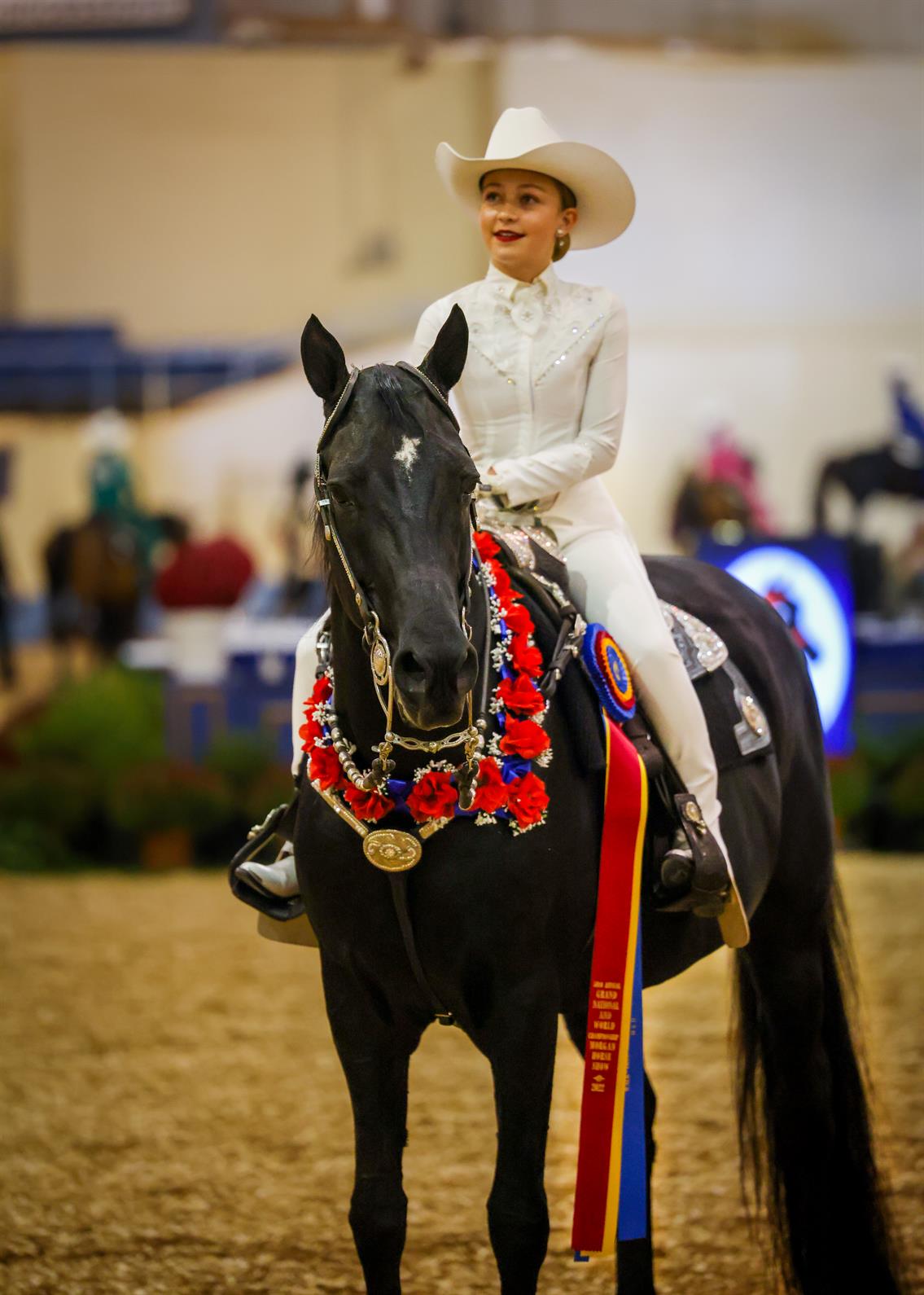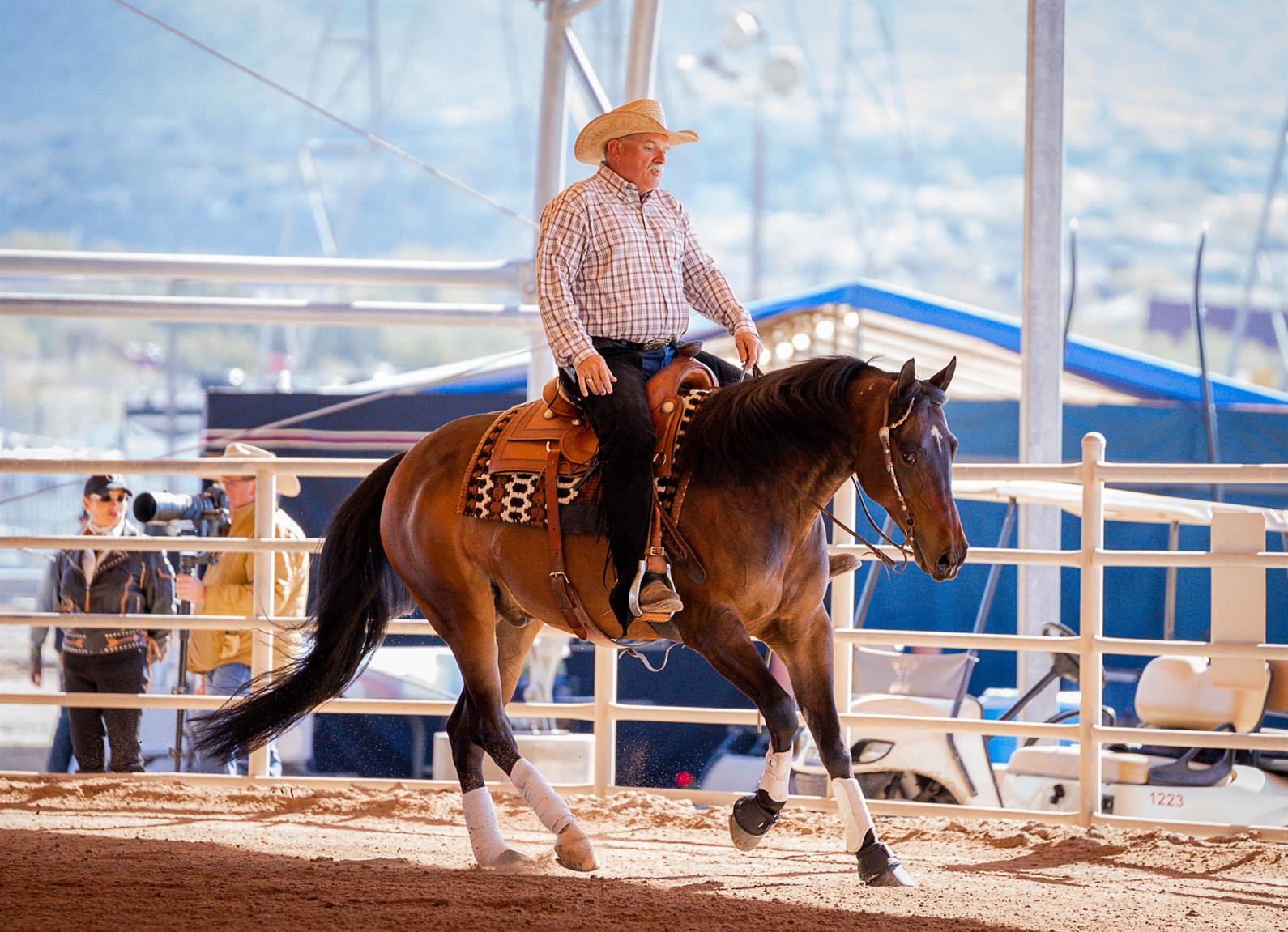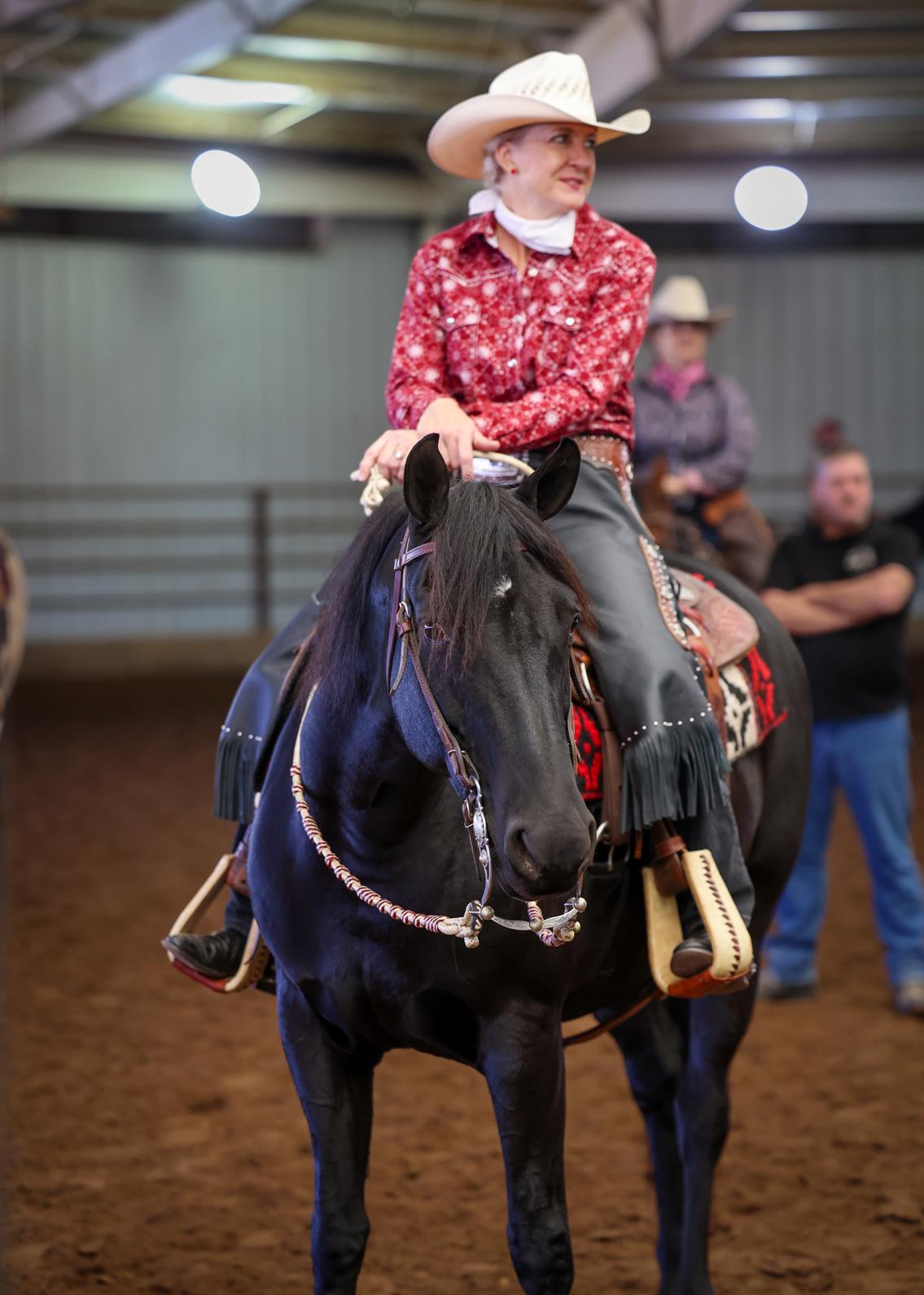When most people think of Western riding, they picture ranch riding; however, upon a closer look, this discipline is a lot more versatile than one may think. The Western discipline offers diverse opportunities that cater to a variety of breeds and riding styles.
Arkansas equestrian Carol Jones, for example, has been riding and training in the Western discipline for over 30 years, and she is experienced in color breeds, stock horses, and quarter horses.
“With the Western discipline in general, there's a million different directions, from Western pleasure and trail to ranch riding to working cow horse and cutting and poles and barrels, as well as just general trail riding,” Jones said. “We did everything from showmanship at halter to poles and barrels, Western pleasure, and horsemanship.”

Darrell Bilke, a USEF-licensed ‘R’ Western judge, has also witnessed the expansion of Western competition. Bilke, who is also Executive Vice President of the Pinto Horse Association of America in Oklahoma, manages over 500 horse shows.
“On the show side, we have basically all the Western classes: Western dressage, Western pleasure, Western riding, trail, horsemanship, showmanship,” Bilke said.
Bilke’s shows feature pinto horses of multiple breeds competing alongside each other, showcasing that every breed of horse has potential to succeed in Western riding. The Western discipline also offers class variety for all ages of riders.
“It's another class that those horses can do, and it just opens the door, because not everyone wants to be an English rider,” Bilke said. “It opens up a new place for those horses and those riders, and it just gives them a lot more experience and opportunities to show the versatility of all their horses.”
It has also led some equestrians to explore other breeds, such as Arabians, Morgans, and American Saddlebreds, helping to expand the market for these horses. For example, Jones’s stock horse experience led her to focus more on Western riding with American Saddlebreds. She was initially hesitant, as she was not familiar with working a traditionally gaited breed.
“The only Saddlebreds that I had seen here in the state of Arkansas were gaited horses, and I didn't realize or recognize that there were even any of those types of horses that were being shown in the Western division,” Jones said.
Once she realized Saddlebreds’ potential in non-gaited disciplines, she began working with them more, wanting to highlight their athleticism, intelligence, and versatility.
“My experience with the stock horses led me to say, ‘Why aren't we doing more of this Western stuff with the American Saddlebreds?’” Jones said. “Just within that breed, the diversity and versatility of being able to do different things under Western gear was a pretty big switch from only knowing anything about the three-gaited and five-gaited horses.”
Kathy Braden had a similar experience, realizing the Western potential of a familiar breed—in her case, Arabians. Braden and her husband Travis run Braden Training Center in Crowley, Texas. The center specializes in ranch riding and Arabian horses, though they also offer cutting and cow horse lessons.

Kathy Braden comes from a working Western background, having grown up on a working cattle ranch in southwest Missouri. But until she met her husband, a second-generation Arabian trainer, she was unaware of the potential of Arabian horses in Western riding.
“I grew up with quarter horses, and he was mostly doing (Arabian) pleasure horses, so I had a lot to learn,” Braden said.
In the past, Braden worked with quarter horses, but after exposure to the Arabian breed, quickly realized the Arabian horses’ talent in Western riding, especially in the cow horse division.
“We put probably over 125 [Arabian] horses on cattle, and of those, we've only had two horses that would not cow. Everything else, they took to it and loved it,” Braden said.
“A lot of the pleasure-type horses, the Arabians and the Morgans, are great ranch horses,” Bilke added.
Braden also explained that, in her opinion, Western riding (especially ranch riding) is more accessible for both horse and rider. She said she personally appreciates ranch riding, as, due to the lack of specific gait requirements, she finds it very good for amateurs; the horse can simply move on its own.
“As an amateur, most people can do the ranch,” she said. “My best recommendation to somebody that would like to come into the ranch is to find a free-moving, natural, balanced horse and enjoy the gaits and the discipline of this ranch riding.”
In addition to the competition-based diversity that Western riding offers, there is also an expansive social community surrounding the category.

Jones explained that she uses social media and local newspapers to find different types of horse shows within the large Western presence in Arkansas. She said there are multiple avenues, not just breed shows, where Western riders can meet people and make connections. Jones also spoke at a ranch riding clinic with the American Saddlebred Horse and Breeders Association in February.
“There's a lot of folks that get together and trail ride together, and they'll have a weekend meeting somewhere at one of the state parks that allows trail riding, and they gather that way. So it doesn't always have to be about the horse showing part of it. Sometimes it's just a good gathering of folks that get together and enjoy their nice horses,” Jones said.
Overall, Jones expressed satisfaction with the diversity of riding opportunities in her area.
“If there's something that you see that you like, then there's almost always a group that's willing to take you in,” Jones said. “More specifically with the American Saddlebred, the advent of having ranch classes available has opened up a whole new avenue for that type of riding and showing the versatility of that particular breed.”
“Ranch riding and ranch rail are carrying most of our Arabian shows,” Braden said. “It really makes it wonderful to see the increase in those numbers, and it's really nice to have people have fun and enjoy what they're doing.”
Ranch riding is not the only Western discipline that is expanding. New Western programs have emerged over the years, such as USEF’s Western Equitation medal program.
Bilke said the future of Western riding is “strong,” citing media such as the TV show Yellowstone as popularizing the riding style to a wider audience.
“We’re seeing a lot of influx from people that have never been around horses that are now wanting to get a horse and start playing at being a cowboy,” Bilke said. “The Western riding style is alive and growing, and we just want to get everybody on horseback and come and have fun.”
New for the upcoming competition year, USEF exhibitors participating in the ranch division at USEF shows will be eligible for Horse of the Year points and awards.


